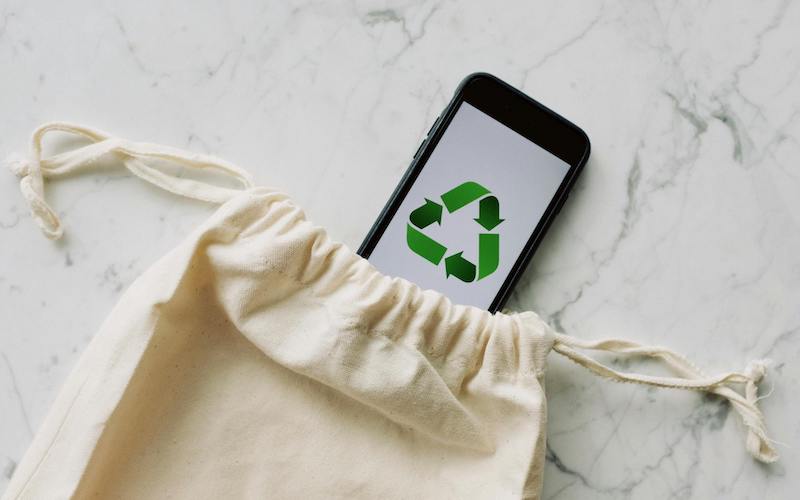
Sustainable packaging isn’t just a buzzword; it’s a commitment to future generations. Efficiency in design, minimalism, innovative labeling, and an educated consumer base are all pieces of this intricate puzzle.
When executed correctly, they not only reduce waste but also curtail our carbon footprint significantly. So let’s unpack some core concepts one by one, and see what makes them significant.
The Material Matters: Choosing What Wraps Our Future
When it comes to packaging, the material used is the first domino in an extensive chain of environmental impacts. Forward-thinking brands are now reaching for biodegradable substances—plant-based plastics, mushroom ‘Styrofoam’, and organic fabrics—to wrap their products in a layer of responsibility. Recycled materials also play a pivotal role. They descend from waste streams, being reborn as new packages with stories of sustainability etched into their fibers.
Adopting these materials isn’t just about checking a box for eco-friendliness; it’s about fundamentally redesigning product life cycles (think cradle-to-cradle). And while embracing these alternatives may involve an initial dance with cost and supply chain adjustments, the long-term payoff is one of reduced ecological footprints and alignment with consumer values that increasingly tip towards planet over profit, while still being part of a strategy to boost sales.
Less is More: The Minimalist Approach to Packaging
The minimalist ideology—trimming down to the essentials—not only applies to lifestyle but also to packaging design. This approach challenges creators to ponder the true necessity of each component in a package. Does that product really need a double-walled box, or will a single layer suffice? Is shrink wrapping essential, or could a simple seal do the job?
By paring down materials and space (and so reducing waste), products can become leaner without compromising protection or appeal. But minimalism’s influence extends further; it often results in lighter packages that demand less from our transportation systems, thereby slashing carbon emissions.
Beyond these tangible benefits, minimalism resonates with consumers seeking simplicity in an overloaded world. It’s sustainable design converging with consumer desire for clarity and authenticity—a powerful combination that can enhance brand loyalty while safeguarding the environment.
Innovations in Labeling: Recycling Made Easier
Labeling, often overlooked, is integral to the recycling process. Conventional labels can contaminate recycling streams, but shrink sleeve labeling emerges as a game-changer. These full-body labels are easily removable, streamlining the separation of materials and enhancing overall recyclability. By opting for this technology, companies not only ensure their packaging is fully dressed in information but also dressed down in seconds for responsible disposal.
Shrink sleeve labeling allows brands to maintain vibrant, eye-catching designs without compromising sustainability goals. It’s a reflection of the times—a marriage between form and function where neither has to be sacrificed for ecological considerations.
As an added layer of innovation, these labels can even incorporate educational cues about proper recycling practices—turning every product into a silent ambassador for environmental stewardship.
The Geometry of Green: Designing for Efficiency
The efficiency of a product’s packaging design can significantly determine its carbon footprint from warehouse to doorstep. Smart geometric design maximizes space—both on the shelf and in transit—allowing more products to be shipped simultaneously, thereby reducing emissions per item.
It’s not simply about downsizing but optimizing shape and volume for better logistics (like designing a square bottle over a round one to fit more units per box). This consideration presents an opportunity to not only minimize environmental impact but also lower shipping costs.
Moreover, when your package is shrewdly shaped for sustainability, it speaks volumes about your brand’s commitment to intelligent, environmentally conscious practices.
The Message on the Box: Educating Through Packaging
Seizing the narrative power of packaging to educate consumers is a potent tool in cultivating a culture of recycling. When a package goes beyond containing and protecting its contents to also communicate the ‘how’ and ‘why’ of recycling, it empowers buyers to participate in sustainability.
Clear, engaging messages directly on the packaging can guide users in disposing of materials correctly. For instance, symbols indicating recyclability or instructions for separating components can dramatically improve compliance with environmental standards.
This strategy doesn’t just contribute to reducing waste; it also fosters brand loyalty among consumers who value companies that take an active role in ecological advocacy. It’s an investment in customer relationships as much as it is in our collective future.
Conclusion
In the confluence of these strategies lies the future of sustainable packaging—a future where each choice in design contributes to a healthier planet. As businesses and consumers embrace these practices, we craft not only better packages, but also a legacy of stewardship for those who follow.
Cover Photo by ready made
